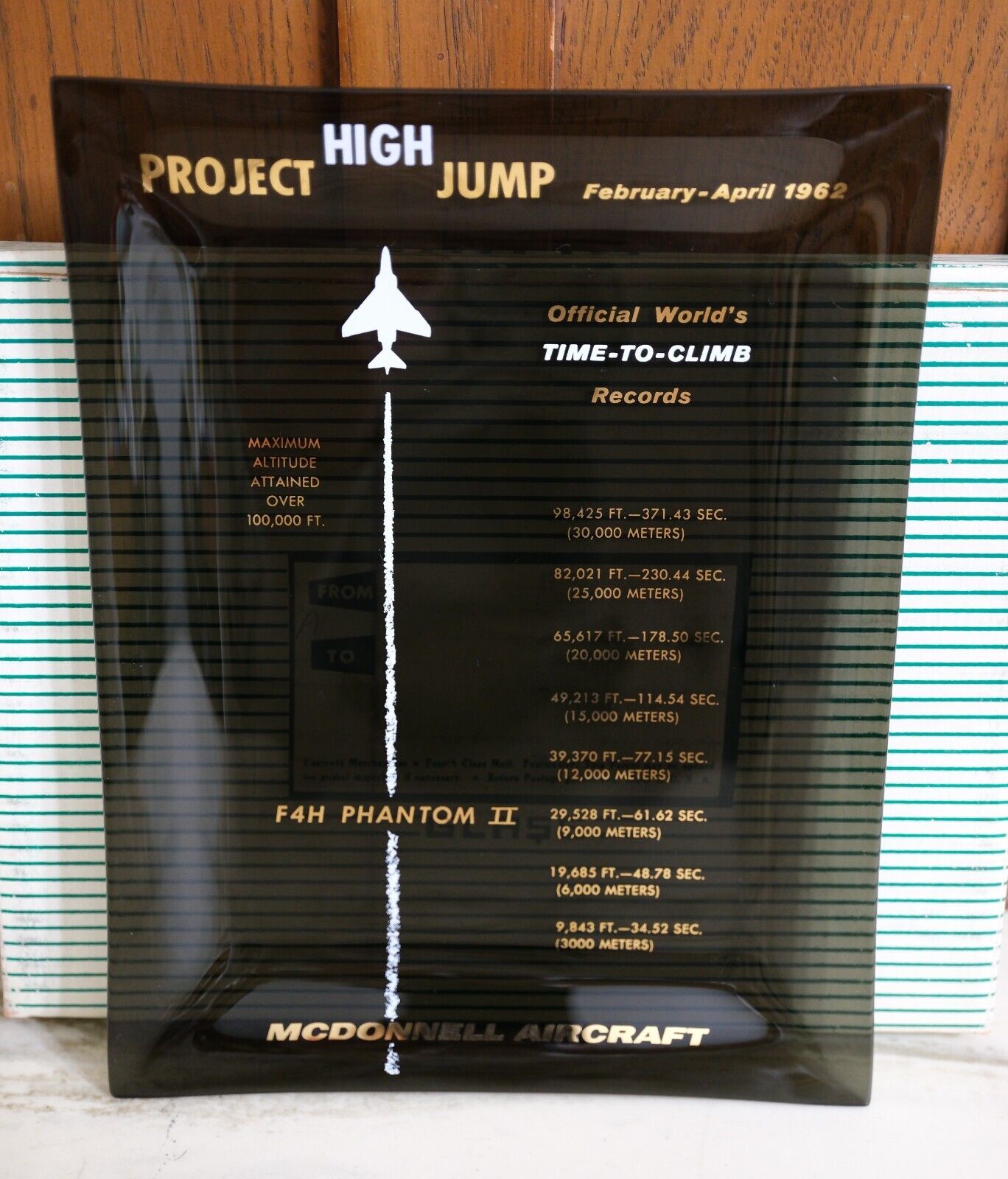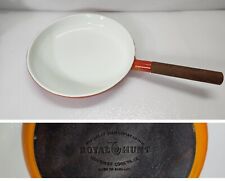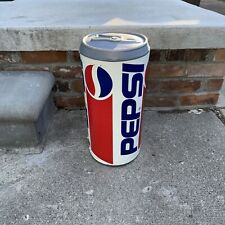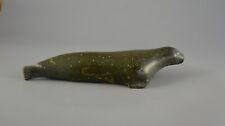Vtg RARE 1962 Project High Jump US Navy F4H Phantom II McDonnell Ashtray w/ Box For Sale

When you click on links to various merchants on this site and make a purchase, this can result in this site earning a commission. Affiliate programs and affiliations include, but are not limited to, the eBay Partner Network.
Vtg RARE 1962 Project High Jump US Navy F4H Phantom II McDonnell Ashtray w/ Box:
$125.00
Up for sale is an original vintage estate find Project High Jump, February - April 1962 commemorative smoke grey glass ash tray, by Friendliness Incorporated Media, of Pennsylvania, measuring 7\" x 9\" with original box. This ashtray commemorates the US Navy Mcdonnell Aircraft F4H Phantom II test flights to break altitude records. Ashtray and box are in amazing condition and I\'ve seen no other examples offered anywhere. I\'m guessing these were made for the pilots and/or pit crew only and are extremely rare!Photos 16 - 19 are shown here as reference and history only, were found online, and are not part of this sale. The sale includes the original ashtray and box only.
Shipping to run $12.50 in the USA and $65.00 to Europe or Japan.
Good luck offerding & God Bless:SOME HISTORY ON PROJECT HIGH JUMP:
3 April 1962: At NAS Point Mugu, Ventura County, California, a future NASA astronaut, United States Navy test pilot Commander John Watts Young, set a newFédération Aéronautique Internationale(FAI)time-to-altitude world record by flying his McDonnell Aircraft Corporation F4H-1 Phantom II, Bureau of Aeronautics serial number (Bu. No.) 149449,¹ from the surface to 25,000 meters (82,021 feet) in 3 minutes, 50.44 seconds.²
John Young had set another FAI record on 21 February, reaching a height of 3,000 meters (9,843 feet) in 34.523 seconds with the Phantom II at NAS Brunswick, Maine.³ Young set a total of 21 FAI records. Three remain current.
This was one of a series of time-to-altitude record flights flown at with F4H-1 149449 during February, March and April 1962. Flown by four other pilots, 149449 also set time-to-altitude records for 3,000, 6,000, 9,000, 12,000, 15,000, and 20,000 meters.
A bridle restrained the F4H-1 on the runway while its engines were run up to full afterburner. The pilot fired an explosive bolt to release the airplane for flight.⁴
Point Mugu’s Runway 21 ends on the edge of the Pacific Ocean and the elevation is 9 feet (2.7 meters) above Sea Level. The restricted airspace of the Pacific Missile Test Range assured that these flights could be conducted safely and without interfering with civilian air traffic. The U.S. Air Force had used the same runway when it conducted time-to-altitude record flights with a Lockheed F-104A Starfighter in 1958.
John Young was a test pilot assigned to the Naval Air Test Center, NAS Patuxent River, Maryland, where he was a project officer for F4H and F8U armament systems. He was selected as a NASA astronaut and served as Pilot of Gemini III; backup pilot, Gemini IV; Commander for Gemini 10; Command Module Pilot on Apollo 10; back-up commander for Apollo 13; Commander, Apollo 16; and back-up commander for Apollo 17. Later, he was Commander of the maiden flight of the space shuttleColumbiaSTS-1 and again for STS-9. He was in line to command STS-61J.
McDonnell F4H-1 Phantom II Bu. No. 149449, redesignated F-4B-11-MC, served with VF-96 aboard the aircraft carrierUSS Ranger(CV-61), VF-151 aboardUSS Coral Sea(CV-43) and was later assigned to Marine Air Group 13, VMFA-323, “Death Rattlers,” based at Chu Lai Air Base, Republic of South Vietnam.
On 2 August 1968, 149449 was hit by small arms fire near An Hoa, 17 miles southeast of Da Nang. On returning the damaged airplane to Chu Lai, the Phantom’s landing gear could not be extended. The pilot, Major DanieI I. Carroll, USMC, and Weapons System Officer, First Lieutenant R.C. Brown, USMC, ejected one mile (1.6 kilometers) off the coast. Both were rescued by a U.S. Army helicopter.
The record-setting Phantom II was lost in the South China Sea.
Another F4H-1 Phantom II flown during Project High Jump was Bu. No. 148423, shown in the photograph above (top). In 1971, -423 was withdrawn from service and used as a ground trainer at the Naval Air Technical Training Center (NATTC) at Millington, Tennessee. It was later converted to the QF-4B drone configuration. It was reported preserved at the Herlong Airport, near Jacksonville, Florida. In 2002, part of the airplane was used as a cockpit display at theUSS Hornet(CV-12) Museum, Alameda, California. In 2004, the nose section was transferred to the Pacific Coast Air Museum, Santa Rosa, California.⁵

Related Items:
Vtg Rare* Royal Hunt 10" Gourmet cookware cast iron frying pan Mint LkNew
$139.01
VINTAGE SUPER RARE 18” X 9” Blow Mold BANK Soda Pop CAN Paper Label Pepsi
$99.95
Rare - Noah Siakuluk 1924-1997 - Vtg Northwest Coast Inuit Serpentine Seal 9"
$265.00



